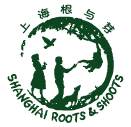Organic Garden丨Autumn Training Finished
Oct.10.2016
On Sep. 25th, the newest members of R&S volunteer family, who were not quite familiar with each other yet, gathered at BioFarm. We would participate in a one-day training, then dive into schools all over Shanghai to spread the power of green.
- Training in basic farming
After an organic lunch, we crossed a small river and several farmlands, eventually arrived at a vegetable greenhouse. This is where we would have our training in basic farming.
Under the guidance of Ms. Wang, a super friendly BioFarm employee, we started making raised beds on a previously weeded land. We picked up tools and began our attempts in groups that were previously divided based on the season each of us likes.
First, one group member dug a straight groove with one-meter interval. Other members took charge of breaking apart dirt clumps and flatten the soil with small spades. Very soon, a raised bed suited for vegetable growth was ready. We then made 4-to-5 straight equally spaced-out small groves on the beds. Afterwards, we evenly sowed the chrysanthemum seeds in the small groves. To finish, we gently sprinkled a thin layer of soil over the seeds as protection. We encountered one earthworm and several pill bugs. Some group even saw a cricket. This was the end of our training on basic farming practice. Many of us didn’t want to leave, “it feels like we just started.”
To teach kids about gardening, we have to do it ourselves first. After this trip, we felt a little more confident. However, to have a good harvest, it takes many years of practice and requires lots of knowledge. This is a long-term process of accumulating skills and knowledge, which certainly can’t be achieved by cramming!
- Pest control
Summer is the time when lives flourish. Cabbage butterflies are very fertile; they can multiply throughout the year. But in June, they fly in swarms, looking like clouds from afar. They lay their eggs on vegetables, which turn to caterpillars later on. These small creatures feed on the leaves of vegetables until they transform to butterflies.
This vivid description by Ms. Wang deeply scared us. We can hardly imagine the sunlight blocking scene by the butterflies. Pesticide is the easiest and most convenient solution for most farmers. However, the serious consequences of using synthetic pesticides, including the damage to the eco system, the pollution to soil, and the eventual harm to our own health are just beyond imagination.
What options do we have other than pesticides? One easy and efficient way is using butterfly net. Other methods include netting, bug light and pheromone. The cylinder-like device using pheromones is very interesting. It has multiple holes on the device, bigger on the outer end, smaller on the inner end; as a result, once a bug goes it, it can hardly get out. The pheromone of female cabbage butterflies is placed inside the device, which attracts and traps the male ones. Without male counterparts, female butterflies can’t multiply. A plastic bag is placed under the device; the bugs caught by the device can then be used as chicken feed or for composting.
In an organic farm, anything that is natural has its value. Waste is treasure when used in the right place.
- Earthworm compost
Earthworm compost is an easy while efficient way of making natural fertilizer. Through Ben’s introduction and demonstration, we found that little earthworms are experts in cleansing the nature while producing high quality fertilizer. Although small in size, they possess the super power of turning vegetable scraps, fruit peels, dead leaves and used paper to fertilizer. More surprisingly, they can also reduce the heavy metal pollution in the soil. The procedure of earthworm composting is very simple; we hope more and more farms would adopt this environment-friendly and efficient practice.
- The life of milk
Does everyone know where the milk we drink everyday comes from? Milk is produced by mommy cow that just gave birth to a calf. The quality of milk is closely related to the health condition of mommy cow, which depends on multiple factors, including her living condition, diet and stress level. To ensure the freshness, milk enters the cold chain starting at the dairy farm. Milk is first pasteurized in factory, then packaged in Tetra Pak or bottles before being transported to the market. After consumption, the Tetra Pak package could be used as containers for gardening. Each step of milk production consumes a lot of energy, therefore, we should cherish every drop of milk we drink.
On the way back, we continued part two of the ice breaking games we started in the morning. It was a trip full of laughter. Very obviously, we have formed strong bonds. This has to be the magic power of the common belief we all share. As the one-day training came to an end, many new friendships had budded.









